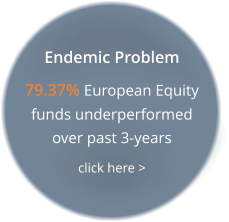A rich source of alpha




Can one perform better?

Our short answer is Yes.
Success is like rearing a delicate flower; space for true investment flair must be set within
a consistent and disciplined framework. Markets are dynamic in nature, sometimes
capricious, sometimes hyper-rational – a process which continually leads investors into
unchartered waters where new opportunities and risks must be identified and carefully
managed.
Safe navigation of troubled water lays the foundation for long-term investment success,
in which light we are proud of our strong performance throughout the 2000 Tech-bubble,
the 2008 GFC, European Crisis of 2011/12, and most recently 2020. Each of these crises
featured new problems requiring new solutions, 2020 arguably more than most.
Overall, post-1996 returns have exceeded our targeted 300-500 basis points
outperformance per annum versus benchmark. We hope there’s plenty more to come
and believe our approach provides a stable platform for durable long-term performance.
A forever problem
A key concern for all investors is missing market moves
that consensus can only explain after the event. It’s
especially irritating when the drivers have been visible for
some time, but their significance was somehow lost or
not fully recognised by mainstream analysts.
Instead of receiving accurate and unbiased forecasts,
investors end up with elaborate but retrospective sell-
side explanations for past events; typically delivered
under a cloak of superiority woven from obscure
acronyms, a jumble of financial ratios, and a mountain
of statistics. All presented within a reassuringly thick
research report.
The two most important questions remain unanswered:
1. Which assets are most likely to perform?
2. Where is the next accident?



Large brokerage houses routinely process vast pools of
information, which renders their dismal failure to accurately
forecast asset prices something of a conundrum.
By synchronously turning the handles of standard valuation
models, there can be no doubt that the sell-side helps
markets digest prodigious quantities of new information.
Over time, however, the rigidity and homogeneity inherent
to these conventional techniques, biases sell-side analysts to
develop systematic blind-spots. These conceal the poorly
understood, unprecedented, and sometimes uncertain
factors that are so often the final arbiter of asset prices.
Forecasting failure is all but inevitable.
Why is the sell-side so dismal at predicting
asset prices?
A rich source of alpha
Partially obscured or poorly analysed ‘stealth factors’ cannot
be accurately discounted in stock and bond valuations via
the normal price discovery process. They are destined to lie
dormant for a while, before eventually popping-up to
trigger an asymmetric return profile following an earnings
or other surprise.
Alternatively, these ‘stealth factors’ may manifest themselves
gradually in the form of major secular trends. These include
the post-2010 fall in the cost of capital within fast moving
consumer stocks (FMCGs), major changes to the structure of
bank earnings, a fall in the natural real rate of interest (r*)
which is in turn exerting a profound effect on equity
valuations, and structural changes in the prices of sovereign
bonds, gold, volatility, etc.
In each case blindsided analysts are faced with a binary
choice: ‘recalibrate’ their models to the new market-traded
prices, or risk irrelevance, and possibly their jobs. What
follows is asset ‘pricing’ that masquerades as ‘valuation’ – a
process which only entrenches the underlying problem.
Deep seams of alpha are laid down for those few ahead of
the game.

Investment Approach


Images by Michael Gaida on Pixabay and Nikita Kachanovsky on Unsplash























































